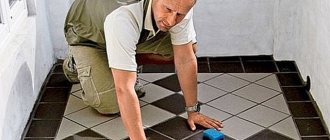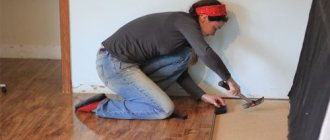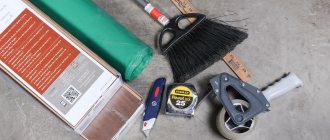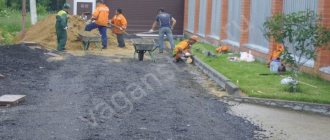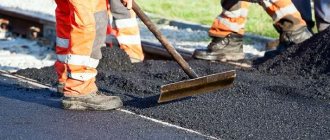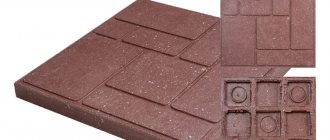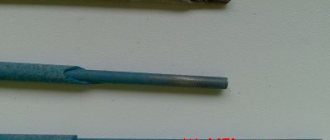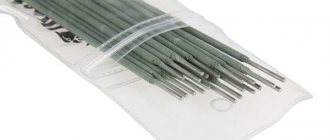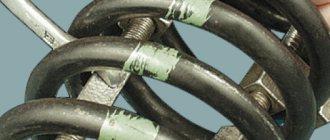The question of how rational it is to lay laminate flooring over parquet flooring remains open today. But if the floor is in terrible condition, worn down to obvious depressions, then the only option is to lay laminate flooring on the old parquet. Although for a person uninitiated in construction matters, such a technique may seem like a rather unprofessional solution.
Installing over old parquet saves time and money
Is it possible to put laminate on parquet (and why)
In fact, not everything is as bad as it might seem at first glance. The parquet floor itself remains a very durable and reliable coating, even if careless owners did not monitor its condition.
The technical possibility of laying laminate flooring on parquet is ensured by several factors:
- A parquet board, even under conditions of intense wear and tear, when properly laid, remains a very reliable, durable and fairly balanced base; laying lamellas on parquet boards is even easier than on concrete;
- A wooden parquet base provides additional thermal insulation, protection from noise, changes in humidity and temperature.
Laying laminate flooring, which is at least 90% wood, on the same wood, even if it’s not in the best condition, is a more logical step than what most covens suggest - tearing down the old floor and replacing the parquet boards with laminate. No special qualifications are required for this type of work, and it is quite possible to earn double the amount. In addition, laying laminate directly on concrete only looks simple from the outside; you will not only need to remove the parquet slips, but also clean the mastic base with which the boards were glued to the floor slab.
The presence of a parquet base does not affect the quality of the laminate
Important! You cannot lay parquet on remaining mastic.
Inspection of parquet flooring
The answer to this question cannot be unambiguous and depends on each specific case.
Only after a detailed inspection can you give a clear answer as to whether your parquet can serve as a reliable basis for the second layer of flooring.
Visual inspection
First of all, we perform a visual inspection of the coating. One of the features of natural wood, from which parquet bars are made, is sensitivity to changes in air humidity.
With increased dampness, wood swells, significantly increasing in volume, and when it dries, it decreases in size.
As a result of numerous repetitions of such cycles, the parquet loses its adhesion to the rough base and peels off.
Tapping parquet
After a visual inspection, we move on to a more detailed inspection using tools. For this we need a wooden or rubber mallet.
With its help, we tap the entire surface of the parquet flooring in order to detect exfoliated areas that are invisible at first glance.
When lightly tapped, firmly held parquet produces a dull sound, while peeling and weakly adhered elements produce a ringing or echoing sound. The exfoliated fragments must be removed, and the remaining recesses must be sealed with putty or plaster mortar.
You should also pay attention to the condition of the wood. If the wooden floor blocks are affected by rot or fungus, it is strictly not recommended to use such a coating as a base. If wooden floor blocks are affected by rot or fungus, it is strictly not recommended to use such a coating as a base.
If the wooden floor blocks are affected by rot or fungus, it is strictly not recommended to use such a coating as a base.
After installation, the laminate laid as a second layer will also very quickly be affected by rot and fungus, which will significantly shorten its service life.
Can laminate be installed over old parquet?
There are quite a lot of reasons for wanting to lay down “fresh” flooring rather than renewing the old one. The shortest list looks something like this:
- It is usually preferred to lay laminate flooring on parquet when the old planks and dies are worn out, but still retain the same integrity and packing density;
- There is an opportunity to save on installing laminate flooring. Dismantling old parquet will require a considerable investment of time and effort.
There is a certain kind of misconception that an old floor can become a source of unpleasant odors, dust and creaking sounds. Sometimes craftsmen fuel such rumors with stories that parquet boards sealed under laminate can rot or become deformed from the accumulation of water vapor. Creaking may appear, as well as pathogenic microflora, but this is the exception rather than the rule. To avoid such problems, before laying laminate flooring on old parquet, you must carefully prepare the old wooden base before laying the slats.
Replacing floors in an apartment
If the logs are in good condition, then you can limit yourself to just removing the wooden flooring.
Replacing floors in a residential area is usually done during a major renovation.
But also the need to lay a new floor covering is dictated by the fact that the old one has become hopelessly dilapidated.
This fully applies to parquet floors. Despite its reliability and durability, even such a coating that has been tested for centuries can become completely unusable during operation.
Of course, it is possible to renew solid wood floors by sanding, but there comes a time when it is no longer possible to revive the parquet.
How to lay laminate on a parquet board: pros and cons
The most important advantage is that the slats can be laid on the parquet quite quickly. With the proper level of preparation, the entire procedure for installing a new coating will take no more than one or two days. In addition, the process of preparing parquet itself does not require any radical changes in the owners’ routine. Even when mechanically processing an old parquet floor to install a new laminate, residents lose practically nothing. The parquet remains in place, you can walk on it and use it, and you can put down the slats at the most convenient time for you. If you remove the parquet down to the concrete, it will be impossible to live in this room. Until the new floor can be laid, residents will have to either move or move into adjacent rooms.
Laminate is a more modern and practical material
The second advantage is that after laying the laminate on the floor, a kind of layer cake is formed from a very durable wooden base, soft cushioning material and a beautiful, reliable and wear-resistant laminate.
Important! If it suddenly turns out that the concrete base requires additional grinding or leveling, then in order to be able to lay the laminate without patches, the estimate may increase by at least 20%, and the time required to lay the laminate flooring will double.
The decision to lay on parquet also has negative sides:
- Rough preparation and cosmetic repairs of old parquet require quite a lot of effort and time; you will need to level the surface, repair the dies and carry out preventive maintenance in areas of possible squeaking;
- If the old parquet floor has been flooded with water at least once, but not dried according to current rules, then the coating may emit an unpleasant swampy smell of old water.
In both cases, problems are solved, although this requires time and certain funds. If such problems cannot be solved with traditional methods, then it is best to remove the old parquet and install laminate. This will be cheaper and more reliable, however, the decision must be made at the inspection stage, before the new floor is laid.
Defective parquet should be disposed of without regret.
putty
After sanding, it is necessary to putty all the joints and cracks between the floorboards. To do this, use one of the types of putty mixtures:
- solvent-based - dries quickly, easy to apply;
- polymer-based - environmentally friendly material;
- homemade.
Homemade putty
The composition for puttying floors under laminate is made with your own hands by mixing sawdust left after sanding with resin, parquet varnish or PVA glue.
Important! It is not advisable to use acrylic putty mixtures or oil-based compounds to prepare parquet for laying laminate flooring, since they are designed to create the ideal appearance of the surface of the finishing material. The putty is applied with a simple metal spatula.
Puttying parquet
Ways to lay laminate on parquet
There are three main options for installing laminate flooring on parquet floors. They all differ in the amount of preparation, money spent and quality of installation.
Most often, craftsmen suggest laying laminate flooring on old parquet as follows:
- Lay the slats on the old floor with an intermediate layer of OSB, fiberboard or plywood;
- Clean installation of laminate flooring on parquet floors. In this case, the parquet boards are repaired, the surface is sanded and leveled by machine to the required level;
- The most unusual method involves pre-filling the repaired parquet with a leveling mixture.
If the first two options do not require any special preparation and are widely used before laying lamellas on an old wooden base, then the last method is used, as a rule, in ancient buildings, when dismantling the parquet board is impossible, and the quality of the old floor requires additional strengthening surfaces using special means. Such methods are used mainly in the restoration of old buildings, so for the average ordinary apartment owner they may turn out to be too expensive and complicated.
Features of laying laminate flooring on old parquet
Before attempting to lay new flooring over old flooring, there are two very important procedures that must be followed. First, you need to check the condition of each parquet board, inspect it individually, check whether it has come off from the mastic glue and whether it sits tightly in place. For those who are encountering parquet for the first time, it will be useful to know that all elements of the parquet set are laid on the floor with a certain gap. As the coating ages, the dies wear out and the gaps increase. The floor begins to play, so it is extremely important to bring it to life before laying the laminate.
The floor must be repaired before laying the laminate
Secondly, parquet floors wear out unevenly; after only 5-10 years of use, depressions form on the surface from wood worn down by shoe soles. Therefore, before laying the laminate, it is necessary to measure the level of the old parquet, mark with a marker the places that will definitely need to be sanded and leveled.
The Importance of Sanding
During preparatory work, partial strengthening of the parquet base is always required. It is necessary to remove the entire parquet block and process it from the inside out with a drill and an abrasive wheel. Sandpaper processing is acceptable. After processing, the parquet block is smeared with glue and returned to its original place. Additionally, the block is strengthened by tapping and driving in nails with a punch.
Unevenness of the parquet base in the form of swelling can be eliminated by using the grinding method. Sanding is often used. In rare cases, it is supplemented with scraping.
Equipment for parquet scraping
Grinding is carried out using special equipment. After the procedure, some parquet floors lose stability. Nails and glue will be required to secure the slabs tightly to the base.
How to lay laminate on old parquet: step-by-step instructions
Identified problematic and flapping boards must first be repaired. Usually the old board is cut out of the set and replaced with a new one. The board is laid on polyurethane or epoxy glue, and the protruding seams and edges are sanded with a hand grinder to the level of the coating.
Simply flapping boards can be pulled to the base with ordinary self-tapping screws. Separately, entire sections of several planks that rose above the general floor level are noted. They will need to be leveled with a sander.
Floor preparation
After all the boards have been examined, studied inside and out, and the most vulnerable areas have been identified and repaired, it is necessary to measure the floor covering again. Using a steel profile and a two-meter building level, or using a conventional two-beam laser system, the locations of dips and bulges in the parquet are determined.
Sanding will eliminate laminate hanging
Grinding of old parquet begins precisely from the places where bulging of individual planks occurred. The result of processing individual areas must be constantly monitored using a building level. After all the largest defects have been removed from the parquet, they proceed to complete sanding of the floor. Since this is just preparation, you need to remove a small layer, the main thing is to level the floor.
If the old floor has “pits”, then you will have to lay plywood
If you plan to lay the laminate on an intermediate sublayer of plywood, then it would be correct to first cut, carry and lay the material on the sanded floor. Even if you don’t pull the plywood to the parquet base, this layout allows you to identify places where the sheets are hanging or the seams are not joining. It is clear that plywood is temporarily loaded with pressure from heavy things and objects. If you adjust the seams and joints correctly, then laying laminate flooring will be easier than on concrete.
Once the joining problems have been resolved, you can lay the plywood directly on the parquet and fix it with self-tapping screws. In the area of future seams, it is advisable to glue the strips with acrylic resin or varnish.
Materials and tools
To lay laminate flooring, you will need the same set of tools and accessories as when laying out the material on a new base:
- Tape measure, building level, marker;
- Laminate cutter, you can use a jigsaw or a circular saw;
- Rubber hammer, pad for tamping laminate;
- Paint brush for cleaning grooves and locks on slats.
In addition, you will definitely need underlay material and gaskets to secure the flooring around the perimeter of the room. To work with the lining you will need a sharp knife or scissors, tape and a stapler with large staples. Sometimes it is useful to secure individual sections of underlayment directly to the hardwood flooring.
Do it yourself laying laminate flooring on parquet
The technology for installing lamellas is practically no different from traditional methods. First of all, the lining material is laid, which is fixed around the perimeter with staples; in the remaining area, the joints between the panels are taped.
Laying the laminate begins from the far wall; if the lamellas are laid directly on the lining material rolled onto the parquet, then it is necessary to monitor how the individual parquet planks behave. Sometimes it happens that during the preparation some of the problem boards are missed and left loose. Therefore, it would be right to once again check how strong the base remains.
Tips on how to install laminate flooring on old parquet
The worse the condition of the parquet base, the more effort and money you have to spend on preparing for installation. Sometimes you just get lucky with parquet, for example, you come across a good oak floor laid on a classic resin base.
It is extremely difficult to get rid of mastic
In this case, the parquet boards not only do not play, they usually sit tightly soldered into the base. Then the laminate can be laid directly on the board; you just need to sand the parquet, cut off the protruding parts and seal the chips with polyurethane resin. In this case, laying the material will cost much less, and the quality will be much higher. True, the laminate will have to be placed on the parquet with glue, but this will only make it more durable and rigid.
How to get rid of a squeak
It often happens that old parquet begins to make sounds due to high humidity or improper care of the material. Before laying a new floor, you can check whether the old one will squeak. To do this, open the windows at night, and in the morning you can come in and walk on the parquet. You can even hold some weight in your hands so that the load on the parquet is greater. If it creaks, then before laying the laminate, the parquet must be thoroughly dried and treated with hot wax mastic.
To prevent squeaking, you will need to treat it with wax mastic.
Where to start restoration?
To begin with, I would like to say a few words about the restoration of parquet flooring. The first thing you need to start with is assessing the condition of the parquet and identifying its main problems. Here it is necessary to clearly determine by what percentage the parquet is damaged: if it is within 50%, then it still makes sense to restore it. In most cases it is cheaper and faster.
First you need to restore the old parquet
Restoration of a parquet base usually takes place in several stages. First, the parquet is tested for strength. Old planks should not dangle. If such a phenomenon is observed, then it is necessary to secure them by gluing or nailing. You will also have to fill all the cracks and crevices, and treat possible insects such as bark beetles, just in case.
If the parquet creaks, then it is important to get rid of the annoying squeak. After this, you can try to peel off the coating and varnish it
But more often than not, people don’t want to do restoration. It’s easier to cover the old coating and update it by covering it with new material. And in this case, you can use laminate.
Laminate in packages
Reviews
Fadeev Semyon Anatolyevich, Ufa:
Parquet always fails for one reason, due to the fact that the floor waterproofing in the house is not done correctly. If you put laminate on such parquet, then be sure that in a couple of years the new floor will creak and clap as if it were a hundred years old. Therefore, before laying the lamellas, the parquet must be treated with an acrylic primer, and use only pressed pine needles as a substrate. It is better not to glue the lamellas. From my experience I know that water vapor escapes easily from pine needles, the floor itself dries very quickly, does not creak or rot. The idea of laying it on parquet is very clever and easy to implement if you have at least some experience working with floors.
Sergey Pankratov, Moscow:
We bought a dacha relatively inexpensively, and there was parquet flooring; we didn’t even notice it right away. We wanted to roll out linoleum, but then changed our minds. In order for the laminate to fit perfectly, you need to wait until summer. The material can only be placed on completely dry parquet. I had to sand it twice because after the first pass I had to replace several pieces that had fallen out. The material was laid as usual, without any adhesives or impregnations. Only in the fall, during heavy rains, does it begin to creak, but this is easily eliminated by treatment. The work is not difficult, it is quite within the capabilities of an ordinary man with his hands.
